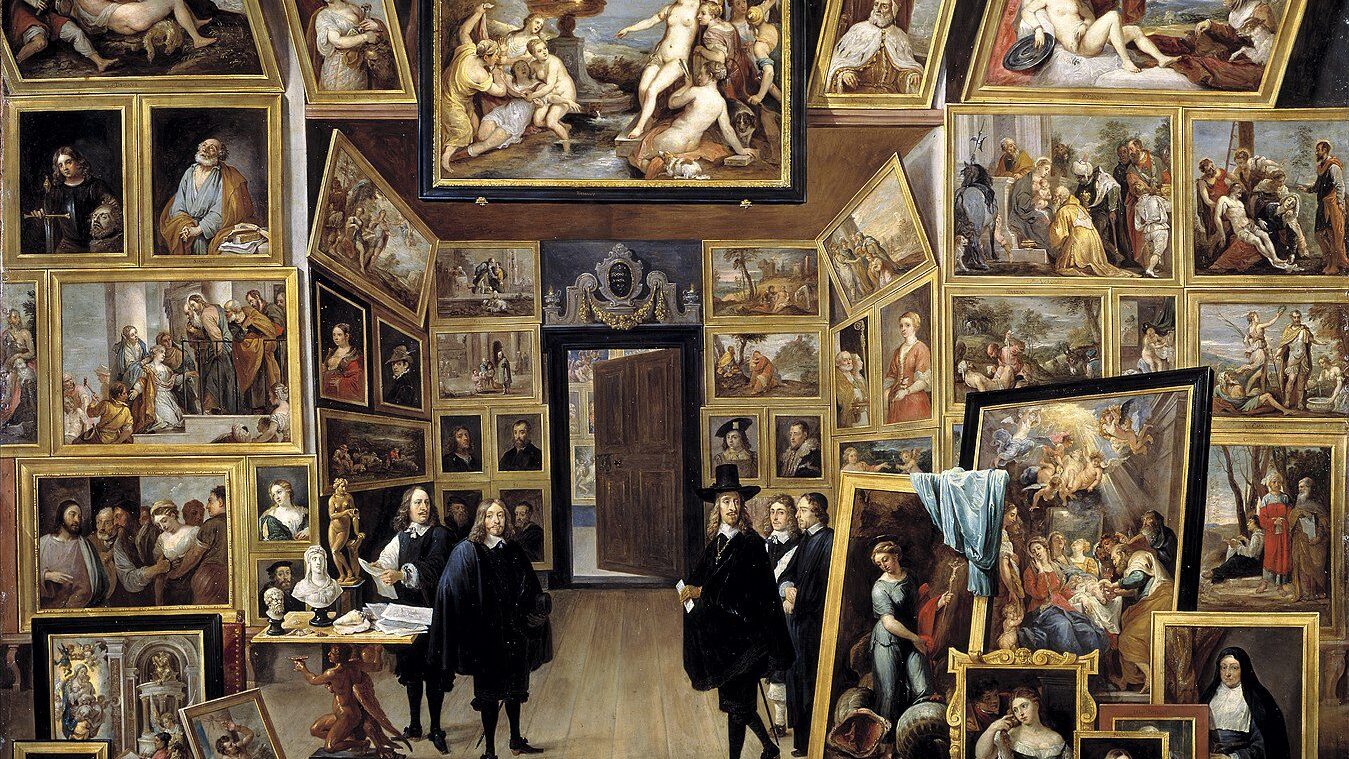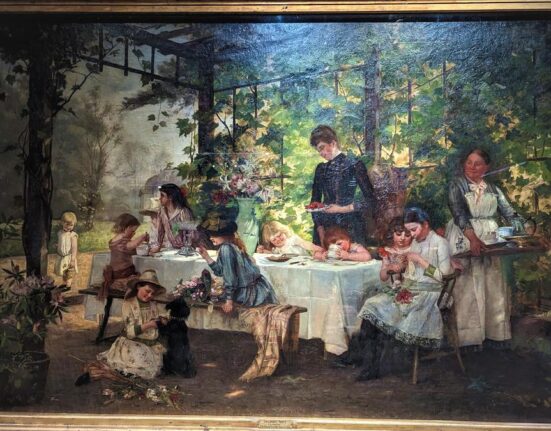Earlier this year, in a series of emails, I had the privilege of discussing the state of conservative aesthetics with Jane Clark Scharl, a poet, playwright, and former editor here at The European Conservative. At the time, I was a research fellow in the James Madison Program at Princeton University, where I was part of an ongoing conversation about the relationship (or lack thereof) between conservatism and the arts. Jane strongly advocated for the creation of conservative artist-in-residence programmes within university departments as a means to redress the cultural balance, which has for some time been almost entirely captured by left-aligned critics and educators.
It was my hope that the Madison Program would be able to champion the creation of works built upon a conservative aesthetics, but there were some challenges with regard to the means by which this would be accomplished. For one thing, university departments tend to be jealous of their territory. If a programme inside the Department of Politics were to advocate for and assist with the creation of works whose study properly belonged to the humanities, then there would be an outcry from humanities departments. They would insist that the Department of Politics should not get into the business of teaching, for example, English literature—although humanities departments seem strangely reluctant to get out of the business of teaching politics.
In the intervening eight months, I have had ample time to think about what can be done to advance conservative aesthetics. After all, my scholarship has been dedicated to the idea that, whether politics is downstream of culture, or culture is downstream of politics, they are nevertheless on the same watercourse. As such, if a conservative political philosophy is to have any sort of real vitality, it must be generative of and receptive to culture. This does not mean that such a politics must be generative and receptive to all things which claim to be culture; it can, and should, critique anticulture—that is, the ostensibly ‘artistic’ things which actually undermine a culture. After all, the aesthetic aspect of culture is nothing more or less than works that build upon and respond to one another in the form of an historical conversation with many voices directed to similar ends. To reject that tradition is to cease participation in the culture, and instead to advocate for its destruction and replacement with something else.
When conservatives abandon the ground of cultural production—by failing to create or advocate for new, aesthetically sound works of art—they yield to the Left the means of individual character formation which is most influential for most people. Young people in particular are pressured by educators and their peers, but their political formation is also shaped by their cultural experiences. The more left-aligned the culture with which they and their peers engage, the greater the effect it will have upon their political and ethical formation. In some cases, these cultural effects can be counteracted by other forces, but it is profoundly unwise to ignore the significant effect that culture has in shaping the worldviews of the vast majority of people.
At present, Britain seems to be the philosophical centre of the best moves that are being made towards advancing a conservative aesthetics. The works of Roger Scruton, in particular, have been taken up by a young generation of conservative scholars in a way that is already generating real and meaningful change within the academy. In America, Russell Kirk was that voice for a previous generation, and the Kirk Center continues his good work. Recent developments in American higher education (such as the success of the Classical Learning Test and the classical schools movement) suggest that American culture is eager to accept interventions that direct education, at least, back towards the pursuit of the true, the good, and the beautiful.
However, if a conservative aesthetics is to be successful in having vital effects upon our wider culture, it must not be confined solely to the realm of academic theory or treated merely as an object of dispassionate classroom study. It must be advanced in the everyday world in which ordinary people participate and from which they derive the better part of their political worldview. That is, not confined solely to museums, churches, and concert halls, but also experienced in popular entertainments such as high-quality and well-publicised television, films, podcasts, music, novels, poetry, visual art, comic books, video games, and much more besides.
Lest it be thought otherwise, I hasten to add that there are disagreements even amongst conservatives as to what constitutes the essential principles of a conservative aesthetics. Such academic disagreements are natural and desirable. Pursued in good faith, they help to sharpen and refine our understanding of what preserves and advances the cause of our best artistic achievements. Such disagreements should not, however, become so intractable as to paralyse the advancement of the very principles that they purport to clarify. Because this article is about what is necessary to advance a ‘conservative aesthetics,’ I will leave the task of formally defining the details to my philosopher colleagues, and, for the purpose of this discussion, I offer only this general (but still, I think, helpful) definition of what a conservative aesthetics must entail:
Works grounded in conservative aesthetics participate in the cultural conversation with respect for the acclaimed works of the past; show an understanding of the formal qualities which underpin those works; build upon and add to that tradition; and have as their ultimate end the elevation of humanity towards the True, the Good, and the Beautiful.
This definition, in turn, suggests four principles of action that will encourage the formation of a conservative cultural worldview. I shall address each principle in turn.
Preservation
Preserve the tradition of fundamental works of art that have directed our worldview towards the True, the Good, and the Beautiful.
If there are to be people who identify themselves as conservatives, then they must have something that they purport to conserve. Some conservatives construe conservatism in the narrowest political sense, seeking only to conserve a particular political system or set of political principles. But that is to miss the purpose of politics entirely, which is not to exist for its own sake, but rather to provide for the common good, including a stable framework in which human flourishing can take place. As demonstrated by the artistic output of thousands of years of human history, aesthetics is one of the most important avenues by which human beings seek to understand and depict the world around them as they pursue the True, the Good, and the Beautiful.
Works of art have influenced generations of human beings since before recorded history; they have been depicted on cave walls, transmitted orally, and scratched into the pillars of temples and cities. Some have become national epics, others have passed into myths that saturate a culture, and others have become the subject of religious belief. In short, their effect upon people is immense beyond description. Such works must be preserved both in order to understand their cultural influence, and in order to preserve the living link to those in the past who have played a role in establishing the culture of the present. Moreover, new works of art participate in a conversation with the works of the past. They build new connexions in a web of generative influences and shared concepts that are more fully understood given the more experience one has with the breadth of a culture. Hence, the great achievements of a culture must be preserved, or else the history of that culture will be unintelligible, and the creation of new culture—works that participate in conversation with tradition—will be impossible. Moreover, the hard-wrought successes that a culture has made towards the True, the Good, and the Beautiful will be lost, at an incalculable cost for humanity.
Consequently, a culture must prioritise above all the preservation of its works of artistic achievement; insofar as is possible, all people must have free and easy access to them, and they must be available in copies that can be owned and shared by individuals, to ensure the widest possible distribution.
Understanding
Understand the formal properties that have been key to our fundamental works of art.
It is insufficient merely to preserve the artistic achievements of a culture. The works of Shakespeare would illuminate no lives if there were no people who could read and understand him. Consequently, the study of our culture’s works of supreme achievement must be a priority second only to the very preservation of culture itself. Again, history shows that the study of a given work of art can continue to yield aesthetic and philosophical benefits hundreds or even thousands of years after the creation of the original work. People still read Shakespeare, still adapt Shakespeare in new and vibrant ways, and still find in Shakespeare not only the understandings of the past, but also aspects new and vital for seeking what is True, what is Good, and what is Beautiful about the human experience in our present moment.
Moreover, to engage in understanding the works of the past is to avoid the hubris of believing that the present moment is superior, and that present man has transcended the timeless flaws and foibles inherent to the species. To understand iambic pentameter, the subtle interplay of prose and poetry, the narrative arc, the structure of stage play, the influences of Italian verse and Grecian drama, and the countless connexions to hundreds of other works of brilliance, is to begin to understand the nigh-inimitable quality of Shakespeare, and to avoid the absurd ignorance of being convinced that such a craft is simplistically mechanical. So too with all the other great works of our culture, to a greater or lesser degree. To understand the craft and the form of an aesthetic enterprise is to begin to understand its culture, and to understand it in a way that cannot be accomplished through any other means.
Consequently, education must prioritise understanding the great works of cultural achievement, with sophistication suitable to the level of education. Such an understanding must be fostered throughout the culture rather than side-lined into a purely academic or specialised setting. Finally, the members of the culture should esteem the understanding of those forms as the best means by which to understand their own history and traditions, and hence their very selves.
Creation
Create new works that are in additive conversation with our fundamental works of art.
A culture which is not generative is dead. Although the great works of the past must be preserved and understood, they should not be revered as the final word in the human conversation. Rather, they are an invitation to engage and to respond within the context of the cultural tradition. Shakespeare responds to Chaucer, to Boccaccio, to Ovid, and to countless others in a poetic and dramatic mode which is grounded in tradition even as it innovates. Likewise, Milton responds to Shakespeare in Paradise Lost; Melville in turn responds both to Shakespeare and Milton (and many more besides) in Moby Dick. To study each of these works in turn is to trace the thread of the tradition as it develops.
This is not to suggest that later authors are necessarily better in pursuing the True, the Good, and the Beautiful. Rather, it is to understand that each author uses the past in concert with the present to fashion something that is at once old and new; grounded in what is timeliness, but also bearing new innovations that may eventually prove to be timeless themselves. Hence it is a sign of the health of a culture, and of the success of its efforts towards preservation and understanding its foremost achievements, that it continues to produce new works which are consistent with its cultural traditions—whether those new efforts are imitative, adaptive, or novel, and whether they are presented in a traditional mode or in an entirely new means of expression.
Consequently, a culture must permit new efforts both within its traditional forms of aesthetic expression and by building upon them. The practises of memorisation, imitation, and adaptation should be a part of ordinary education at all levels. And cultural productions must develop so as to remain part of all modes and media of cultural experience at the highest levels of quality and production.
Advocacy
Advocate for both newly created and fundamental works of art alike.
Modern experience suggests that, in an increasingly globalised and homogenised world, cultural preservation necessitates a degree of encouragement and advocacy in order to avoid dilution or obliteration. This is especially the case as global society becomes broader, but ever shallower, in its apprehension of cultural knowledge, paradoxically undermining the ability of people to understand the cultures with which they ever more frequently interact. Hence, cultural institutions must advocate both for serious engagement with their traditions, and for new works that are consistent with those traditions, as outlined above. Otherwise, the culture risks being reduced to a simplistic caricature at best—or, at worst, irrelevance and subsequent disappearance. Because the most significant cultural engagements often (but not always) require an unusual degree of expertise and talent, advocacy is necessary in order to encourage the participation of those who possess one or both. In addition, advocacy helps to maintain the profile of vital, fundamental works which, purely through their appropriate familiarity, might wrongly be considered outmoded or trite.
Consequently, individuals and institutions must exercise their influence to advocate for the preservation, understanding, and creation of works that participate in the cultural tradition and which pursue the True, the Good, and the Beautiful. Ample funding should be directed to these ends in both the academic and popular spheres. Lastly, every effort should be undertaken to raise the profile of these works, new or old, with the goal of encouraging vibrant and enduring mass participation in the culture.
Conclusion
Obviously, these four general principles of action are not exhaustive with regard to advancing a truly conservative culture. But by adopting the principles outlined above, conservatives can begin to redress the present cultural imbalance now faced by people who live in the West—an imbalance that favours an anticulture that is hostile to the unparalleled tradition of Western civilisation. In so doing, we will have taken an important step towards revitalising and preserving our shared culture, so that we can pass it on to the next generation as it was entrusted to our own. And thus, the flickering torch which has illuminated the long and winding pathway towards the True, the Good, and the Beautiful will not expire on our watch. Rather, it will brighten all the more until new hands, in a new time, take it up in turn.







